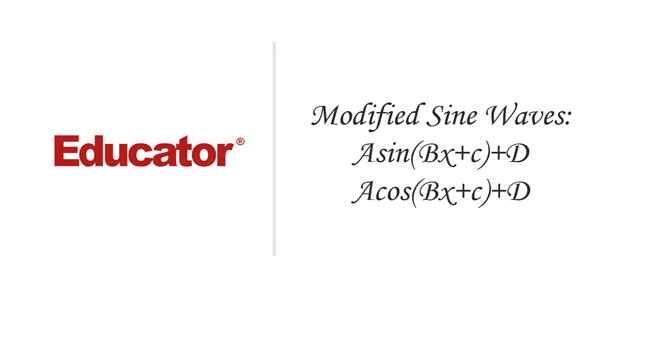

Professor Murray
Modified Sine Waves: Asin(Bx+C)+D and Acos(Bx+C)+D
Slide Duration:Table of Contents
39m 5s
- Intro0:00
- Degrees0:22
- Circle is 360 Degrees0:48
- Splitting a Circle1:13
- Radians2:08
- Circle is 2 Pi Radians2:31
- One Radian2:52
- Half-Circle and Right Angle4:00
- Converting Between Degrees and Radians6:24
- Formulas for Degrees and Radians6:52
- Coterminal, Complementary, Supplementary Angles7:23
- Coterminal Angles7:30
- Complementary Angles9:40
- Supplementary Angles10:08
- Example 1: Dividing a Circle10:38
- Example 2: Converting Between Degrees and Radians11:56
- Example 3: Quadrants and Coterminal Angles14:18
- Extra Example 1: Common Angle Conversions-1
- Extra Example 2: Quadrants and Coterminal Angles-2
43m 16s
- Intro0:00
- Sine and Cosine0:15
- Unit Circle0:22
- Coordinates on Unit Circle1:03
- Right Triangles1:52
- Adjacent, Opposite, Hypotenuse2:25
- Master Right Triangle Formula: SOHCAHTOA2:48
- Odd Functions, Even Functions4:40
- Example: Odd Function4:56
- Example: Even Function7:30
- Example 1: Sine and Cosine10:27
- Example 2: Graphing Sine and Cosine Functions14:39
- Example 3: Right Triangle21:40
- Example 4: Odd, Even, or Neither26:01
- Extra Example 1: Right Triangle-1
- Extra Example 2: Graphing Sine and Cosine Functions-2
33m 5s
- Intro0:00
- 45-45-90 Triangle and 30-60-90 Triangle0:08
- 45-45-90 Triangle0:21
- 30-60-90 Triangle2:06
- Mnemonic: All Students Take Calculus (ASTC)5:21
- Using the Unit Circle5:59
- New Angles6:21
- Other Quadrants9:43
- Mnemonic: All Students Take Calculus10:13
- Example 1: Convert, Quadrant, Sine/Cosine13:11
- Example 2: Convert, Quadrant, Sine/Cosine16:48
- Example 3: All Angles and Quadrants20:21
- Extra Example 1: Convert, Quadrant, Sine/Cosine-1
- Extra Example 2: All Angles and Quadrants-2
52m 3s
- Intro0:00
- Amplitude and Period of a Sine Wave0:38
- Sine Wave Graph0:58
- Amplitude: Distance from Middle to Peak1:18
- Peak: Distance from Peak to Peak2:41
- Phase Shift and Vertical Shift4:13
- Phase Shift: Distance Shifted Horizontally4:16
- Vertical Shift: Distance Shifted Vertically6:48
- Example 1: Amplitude/Period/Phase and Vertical Shift8:04
- Example 2: Amplitude/Period/Phase and Vertical Shift17:39
- Example 3: Find Sine Wave Given Attributes25:23
- Extra Example 1: Amplitude/Period/Phase and Vertical Shift-1
- Extra Example 2: Find Cosine Wave Given Attributes-2
36m 4s
- Intro0:00
- Tangent and Cotangent Definitions0:21
- Tangent Definition0:25
- Cotangent Definition0:47
- Master Formula: SOHCAHTOA1:01
- Mnemonic1:16
- Tangent and Cotangent Values2:29
- Remember Common Values of Sine and Cosine2:46
- 90 Degrees Undefined4:36
- Slope and Menmonic: ASTC5:47
- Uses of Tangent5:54
- Example: Tangent of Angle is Slope6:09
- Sign of Tangent in Quadrants7:49
- Example 1: Graph Tangent and Cotangent Functions10:42
- Example 2: Tangent and Cotangent of Angles16:09
- Example 3: Odd, Even, or Neither18:56
- Extra Example 1: Tangent and Cotangent of Angles-1
- Extra Example 2: Tangent and Cotangent of Angles-2
27m 18s
- Intro0:00
- Secant and Cosecant Definitions0:17
- Secant Definition0:18
- Cosecant Definition0:33
- Example 1: Graph Secant Function0:48
- Example 2: Values of Secant and Cosecant6:49
- Example 3: Odd, Even, or Neither12:49
- Extra Example 1: Graph of Cosecant Function-1
- Extra Example 2: Values of Secant and Cosecant-2
32m 58s
- Intro0:00
- Arcsine Function0:24
- Restrictions between -1 and 10:43
- Arcsine Notation1:26
- Arccosine Function3:07
- Restrictions between -1 and 13:36
- Cosine Notation3:53
- Arctangent Function4:30
- Between -Pi/2 and Pi/24:44
- Tangent Notation5:02
- Example 1: Domain/Range/Graph of Arcsine5:45
- Example 2: Arcsin/Arccos/Arctan Values10:46
- Example 3: Domain/Range/Graph of Arctangent17:14
- Extra Example 1: Domain/Range/Graph of Arccosine-1
- Extra Example 2: Arcsin/Arccos/Arctan Values-2
31m 8s
- Intro0:00
- Inverse Trigonometric Function Domains and Ranges0:31
- Arcsine0:41
- Arccosine1:14
- Arctangent1:41
- Example 1: Arcsines of Common Values2:44
- Example 2: Odd, Even, or Neither5:57
- Example 3: Arccosines of Common Values12:24
- Extra Example 1: Arctangents of Common Values-1
- Extra Example 2: Arcsin/Arccos/Arctan Values-2
19m 11s
- Intro0:00
- Pythagorean Identity0:17
- Pythagorean Triangle0:27
- Pythagorean Identity0:45
- Example 1: Use Pythagorean Theorem to Prove Pythagorean Identity1:14
- Example 2: Find Angle Given Cosine and Quadrant4:18
- Example 3: Verify Trigonometric Identity8:00
- Extra Example 1: Use Pythagorean Identity to Prove Pythagorean Theorem-1
- Extra Example 2: Find Angle Given Cosine and Quadrant-2
23m 16s
- Intro0:00
- Main Formulas0:19
- Companion to Pythagorean Identity0:27
- For Cotangents and Cosecants0:52
- How to Remember0:58
- Example 1: Prove the Identity1:40
- Example 2: Given Tan Find Sec3:42
- Example 3: Prove the Identity7:45
- Extra Example 1: Prove the Identity-1
- Extra Example 2: Given Sec Find Tan-2
52m 52s
- Intro0:00
- Addition and Subtraction Formulas0:09
- How to Remember0:48
- Cofunction Identities1:31
- How to Remember Graphically1:44
- Where to Use Cofunction Identities2:52
- Example 1: Derive the Formula for cos(A-B)3:08
- Example 2: Use Addition and Subtraction Formulas16:03
- Example 3: Use Addition and Subtraction Formulas to Prove Identity25:11
- Extra Example 1: Use cos(A-B) and Cofunction Identities-1
- Extra Example 2: Convert to Radians and use Formulas-2
29m 5s
- Intro0:00
- Main Formula0:07
- How to Remember from Addition Formula0:18
- Two Other Forms1:35
- Example 1: Find Sine and Cosine of Angle using Double Angle3:16
- Example 2: Prove Trigonometric Identity using Double Angle9:37
- Example 3: Use Addition and Subtraction Formulas12:38
- Extra Example 1: Find Sine and Cosine of Angle using Double Angle-1
- Extra Example 2: Prove Trigonometric Identity using Double Angle-2
43m 55s
- Intro0:00
- Main Formulas0:09
- Confusing Part0:34
- Example 1: Find Sine and Cosine of Angle using Half-Angle0:54
- Example 2: Prove Trigonometric Identity using Half-Angle11:51
- Example 3: Prove the Half-Angle Formula for Tangents18:39
- Extra Example 1: Find Sine and Cosine of Angle using Half-Angle-1
- Extra Example 2: Prove Trigonometric Identity using Half-Angle-2
25m 43s
- Intro0:00
- Master Formula for Right Angles0:11
- SOHCAHTOA0:15
- Only for Right Triangles1:26
- Example 1: Find All Angles in a Triangle2:19
- Example 2: Find Lengths of All Sides of Triangle7:39
- Example 3: Find All Angles in a Triangle11:00
- Extra Example 1: Find All Angles in a Triangle-1
- Extra Example 2: Find Lengths of All Sides of Triangle-2
56m 40s
- Intro0:00
- Law of Sines Formula0:18
- SOHCAHTOA0:27
- Any Triangle0:59
- Graphical Representation1:25
- Solving Triangle Completely2:37
- When to Use Law of Sines2:55
- ASA, SAA, SSA, AAA2:59
- SAS, SSS for Law of Cosines7:11
- Example 1: How Many Triangles Satisfy Conditions, Solve Completely8:44
- Example 2: How Many Triangles Satisfy Conditions, Solve Completely15:30
- Example 3: How Many Triangles Satisfy Conditions, Solve Completely28:32
- Extra Example 1: How Many Triangles Satisfy Conditions, Solve Completely-1
- Extra Example 2: How Many Triangles Satisfy Conditions, Solve Completely-2
49m 5s
- Intro0:00
- Law of Cosines Formula0:23
- Graphical Representation0:34
- Relates Sides to Angles1:00
- Any Triangle1:20
- Generalization of Pythagorean Theorem1:32
- When to Use Law of Cosines2:26
- SAS, SSS2:30
- Heron's Formula4:49
- Semiperimeter S5:11
- Example 1: How Many Triangles Satisfy Conditions, Solve Completely5:53
- Example 2: How Many Triangles Satisfy Conditions, Solve Completely15:19
- Example 3: Find Area of a Triangle Given All Side Lengths26:33
- Extra Example 1: How Many Triangles Satisfy Conditions, Solve Completely-1
- Extra Example 2: Length of Third Side and Area of Triangle-2
27m 37s
- Intro0:00
- Master Right Triangle Formula and Law of Cosines0:19
- SOHCAHTOA0:27
- Law of Cosines1:23
- Heron's Formula2:22
- Semiperimeter S2:37
- Example 1: Area of Triangle with Two Sides and One Angle3:12
- Example 2: Area of Triangle with Three Sides6:11
- Example 3: Area of Triangle with Three Sides, No Heron's Formula8:50
- Extra Example 1: Area of Triangle with Two Sides and One Angle-1
- Extra Example 2: Area of Triangle with Two Sides and One Angle-2
34m 25s
- Intro0:00
- Formulas to Remember0:11
- SOHCAHTOA0:15
- Law of Sines0:55
- Law of Cosines1:48
- Heron's Formula2:46
- Example 1: Telephone Pole Height4:01
- Example 2: Bridge Length7:48
- Example 3: Area of Triangular Field14:20
- Extra Example 1: Kite Height-1
- Extra Example 2: Roads to a Town-2
46m 42s
- Intro0:00
- Vector Formulas and Concepts0:12
- Vectors as Arrows0:28
- Magnitude0:38
- Direction0:50
- Drawing Vectors1:16
- Uses of Vectors: Velocity, Force1:37
- Vector Magnitude Formula3:15
- Vector Direction Formula3:28
- Vector Components6:27
- Example 1: Magnitude and Direction of Vector8:00
- Example 2: Force to a Box on a Ramp12:25
- Example 3: Plane with Wind18:30
- Extra Example 1: Components of a Vector-1
- Extra Example 2: Ship with a Current-2
1h 7m 35s
- Intro0:00
- Polar Coordinates vs Rectangular/Cartesian Coordinates0:12
- Rectangular Coordinates, Cartesian Coordinates0:23
- Polar Coordinates0:59
- Converting Between Polar and Rectangular Coordinates2:06
- R2:16
- Theta2:48
- Example 1: Convert Rectangular to Polar Coordinates6:53
- Example 2: Convert Polar to Rectangular Coordinates17:28
- Example 3: Graph the Polar Equation28:00
- Extra Example 1: Convert Polar to Rectangular Coordinates-1
- Extra Example 2: Graph the Polar Equation-2
35m 59s
- Intro0:00
- Main Definition0:07
- Number i0:23
- Complex Number Form0:33
- Powers of Imaginary Number i1:00
- Repeating Pattern1:43
- Operations on Complex Numbers3:30
- Adding and Subtracting Complex Numbers3:39
- Multiplying Complex Numbers4:39
- FOIL Method5:06
- Conjugation6:29
- Dividing Complex Numbers7:34
- Conjugate of Denominator7:45
- Example 1: Solve For Complex Number z11:02
- Example 2: Expand and Simplify15:34
- Example 3: Simplify the Powers of i17:50
- Extra Example 1: Simplify-1
- Extra Example 2: All Complex Numbers Satisfying Equation-2
40m 43s
- Intro0:00
- Polar Coordinates0:49
- Rectangular Form0:52
- Polar Form1:25
- R and Theta1:51
- Polar Form Conversion2:27
- R and Theta2:35
- Optimal Values4:05
- Euler's Formula4:25
- Multiplying Two Complex Numbers in Polar Form6:10
- Multiply r's Together and Add Exponents6:32
- Example 1: Convert Rectangular to Polar Form7:17
- Example 2: Convert Polar to Rectangular Form13:49
- Example 3: Multiply Two Complex Numbers17:28
- Extra Example 1: Convert Between Rectangular and Polar Forms-1
- Extra Example 2: Simplify Expression to Polar Form-2
57m 37s
- Intro0:00
- Introduction to DeMoivre's Theorem0:10
- n nth Roots3:06
- DeMoivre's Theorem: Finding nth Roots3:52
- Relation to Unit Circle6:29
- One nth Root for Each Value of k7:11
- Example 1: Convert to Polar Form and Use DeMoivre's Theorem8:24
- Example 2: Find Complex Eighth Roots15:27
- Example 3: Find Complex Roots27:49
- Extra Example 1: Convert to Polar Form and Use DeMoivre's Theorem-1
- Extra Example 2: Find Complex Fourth Roots-2
For more information, please see full course syllabus of Trigonometry
Trigonometry Modified Sine Waves: Asin(Bx+C)+D and Acos(Bx+C)+D
In this video you will learn about modified sine waves. Instead of using sin(x), you'll start using sin(2x), 5sin(3x),12cos(x+4) and so on. You'll learn what each of these new numbers in the new function represent, how they affect its graph (how they move it around), and how to actually graph the new functions. A very important characteristic of sine and cosine functions is that they are periodic. Their graph is formed by repeated patterns. Also, the graph of the sine function has a specific height. Using all these properties, you'll see the amplitude, the period, the domain and the range, and how to apply transformations on the base function sin(x).
Share this knowledge with your friends!
Copy & Paste this embed code into your website’s HTML
Please ensure that your website editor is in text mode when you paste the code.(In Wordpress, the mode button is on the top right corner.)
- - Allow users to view the embedded video in full-size.










































 Answer Engine
Answer Engine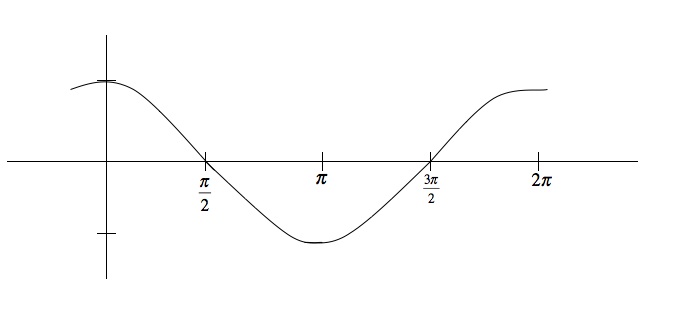
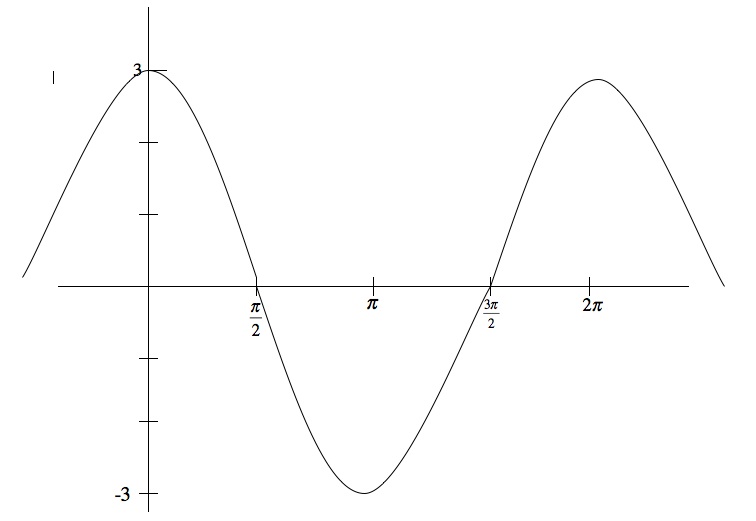
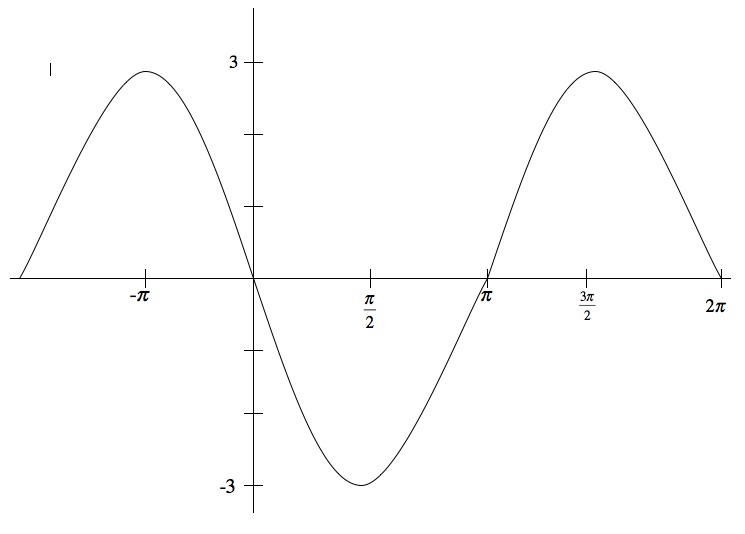
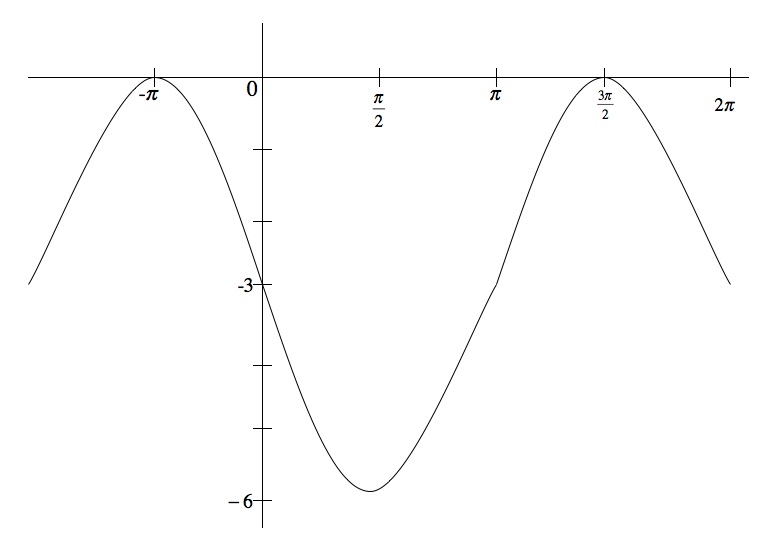
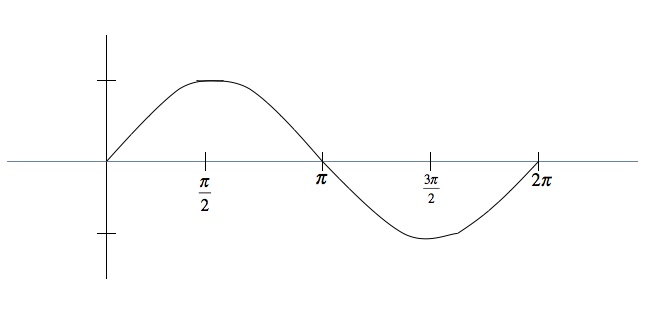
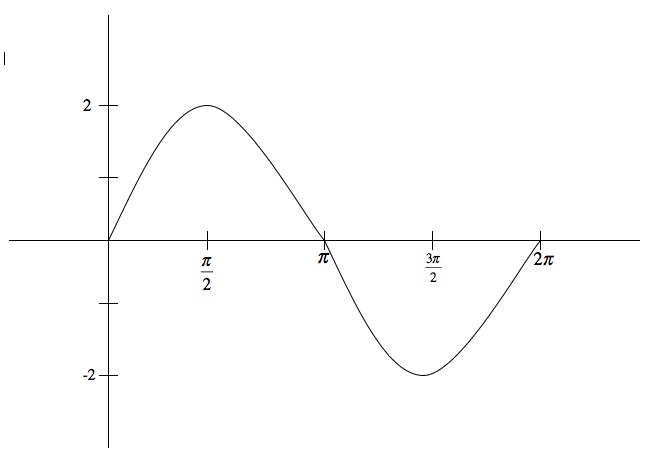
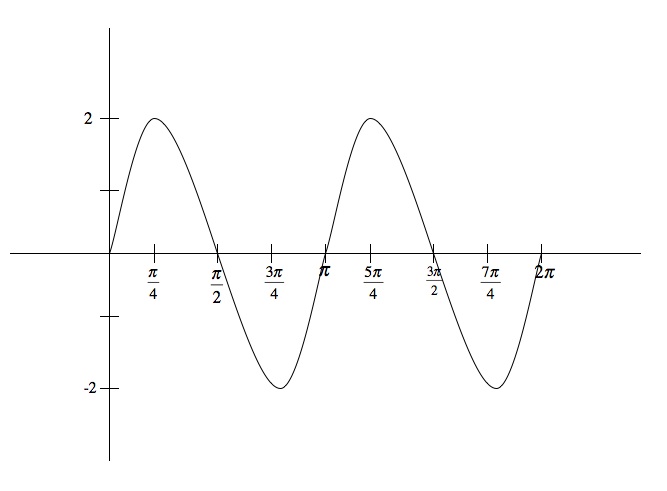
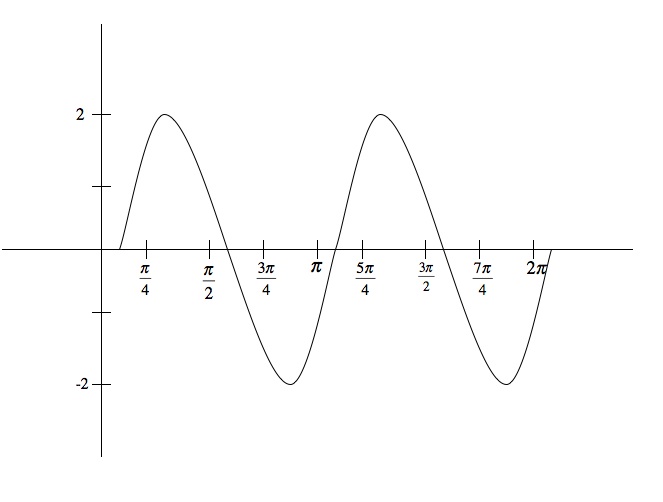
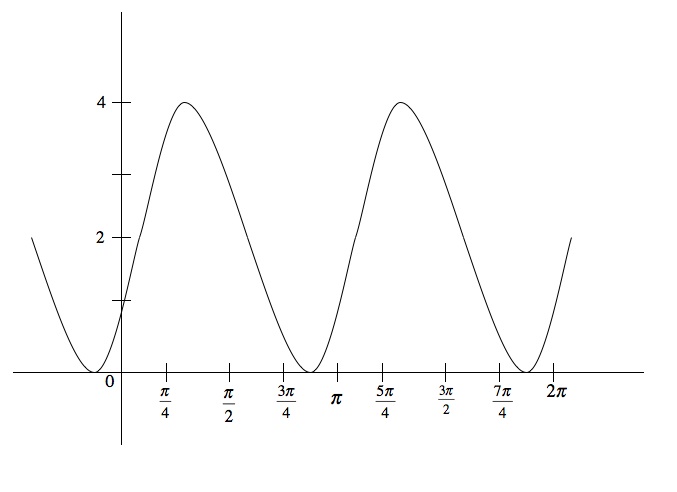
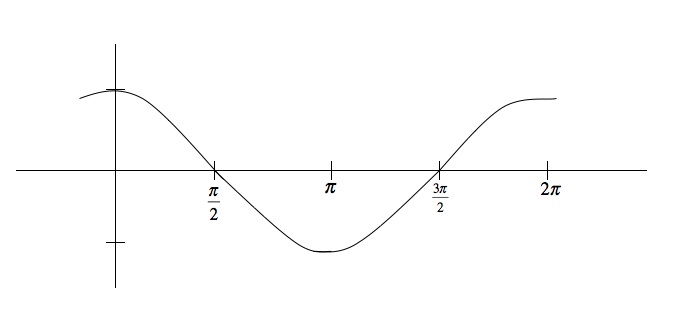
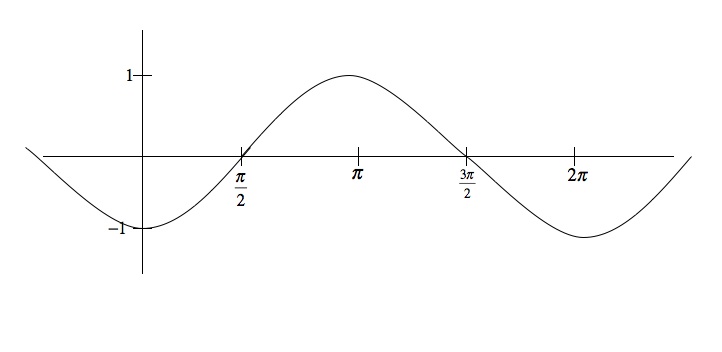
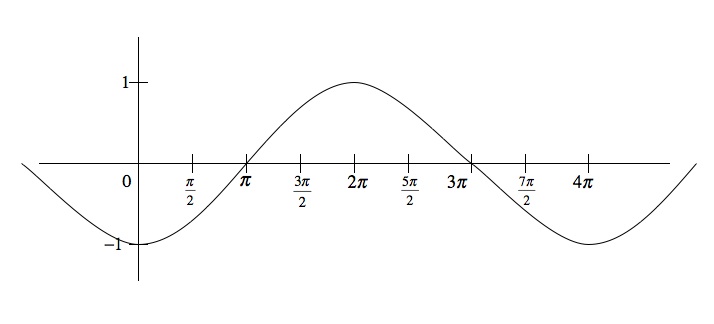
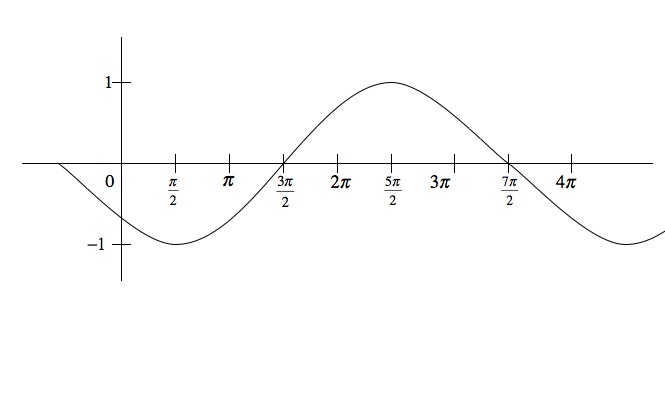
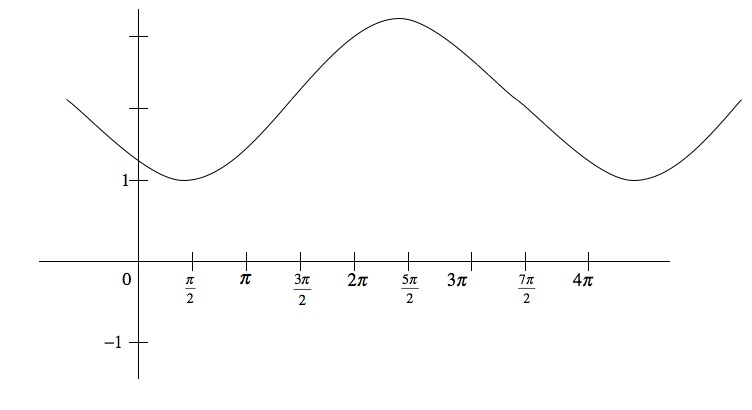
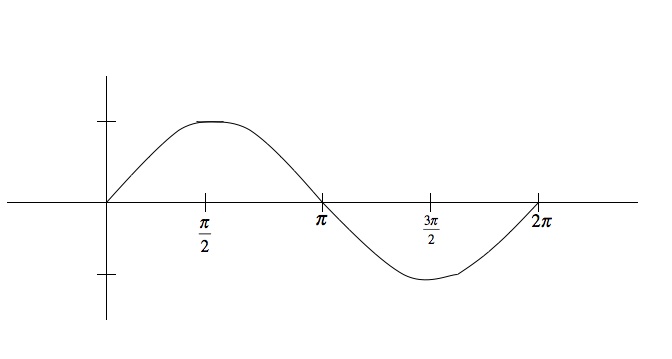
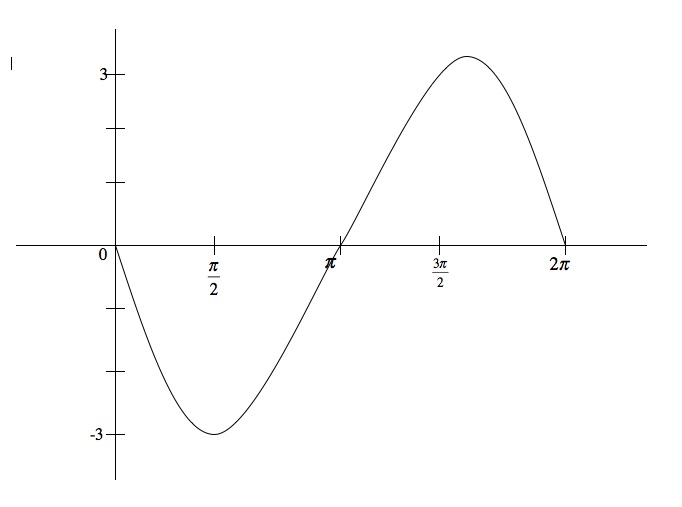
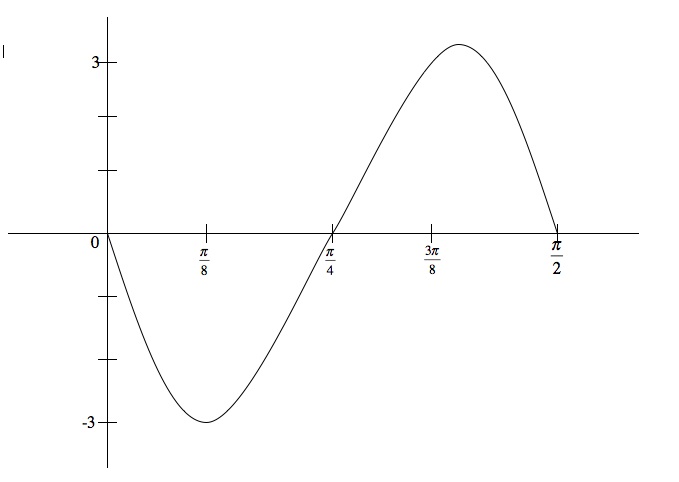
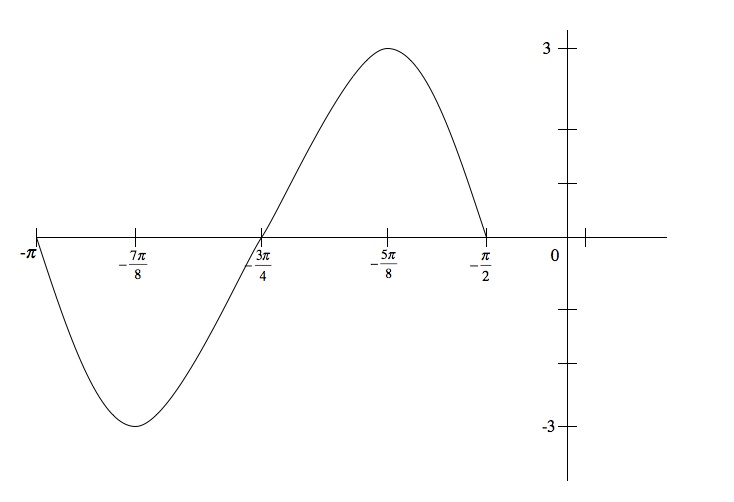
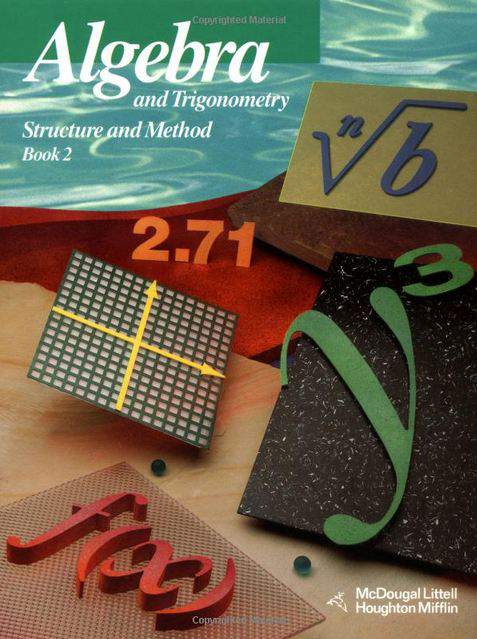



2 answers
Last reply by: Jimmy Luo
Thu Jul 1, 2021 7:51 PM
Post by Jimmy Luo on June 29, 2021
Is there a way to save your progress as in when you come back to a video, it will continue from where you left off the last time you watched it?
2 answers
Last reply by: Ann Gao
Tue Jul 14, 2020 4:25 PM
Post by Ann Gao on July 11, 2020
Hi professor, my teacher gave me this problem and I can't quite figure it out. It says to watch this video https://players.brightcove.net/1126213333001/default_default/index.html?videoId=5556623829001
"Assume the camera is placed 6 feet from the center of the merry-go-round and the diameter of the merry-go-round is 6 feet. Build a trigonometric function that models the distance (feet) of the rider from the camera as a function of time (seconds). " Would you help me get started on this?
1 answer
Fri May 8, 2020 9:54 AM
Post by Kevin Liang on May 7, 2020
Hello professor,
I have a question regarding the phase shift. I don't get why when the phase shift is positive, the origin moves to the right and vice versa. Shouldn't it be the other way around? Thanks for the amazing lectures.
1 answer
Wed Mar 25, 2020 11:40 AM
Post by Matthew Zhang on March 24, 2020
Hello Professor,
For the phase shift of the sine function, is it possible to move the function to the left into the 2nd quadrant? Or will it only be possible to move it C/B units to the right?
Thank you for the very helpful lectures!
1 answer
Last reply by: Epcvan
Fri Mar 20, 2020 12:15 AM
Post by danielfangzhu on March 19, 2020
Isn't B(x + C/B) = B[x-(-C/B)], not B[x - C/B]? (for the phase shift)?
1 answer
Wed Mar 18, 2015 8:10 PM
Post by Napolean Richard on March 16, 2015
Dear sir,
As the amplitude can the value of| A|.SO if there are two possible answers in the Example 3:2sin(pi/2*x-pi/4)+1 and -2sin(pi/2*x-pi/4)+1?and so does the graph?
1 answer
Sun Jan 4, 2015 7:35 PM
Post by Rasheed Abdullah on December 31, 2014
Thank you for the wonderful lecture. However I noticed that, because the amplitude is always the absolute value of "A," the number there can be either negative or positive and still form the same graph. Is this true for all sine and cosine waves or is there a change to the graph when a negative number is used?
Thank you,
Rasheed A.
1 answer
Mon Nov 3, 2014 9:16 PM
Post by Carroll Fields on November 1, 2014
I have another question. Why on the period portion of the question "B", are you writing for example, in Extra Example II: 2/3x, I thought it would be 2/3pi.
Thanks a lot for the lecture, it helped me very much in learning this concept.
Rusty
1 answer
Mon Nov 3, 2014 9:15 PM
Post by Carroll Fields on November 1, 2014
Can you please explain again the math behind the vertical shift: -C/B.
How you factored out B?
Thank You,
Rusty
1 answer
Tue Aug 5, 2014 3:05 PM
Post by Jason Wilson on July 21, 2014
My previous question is referencing example one time around 13:50-14:50ish thnks
1 answer
Tue Aug 5, 2014 3:06 PM
Post by Jason Wilson on July 21, 2014
a couple of Quick questions. The phase shift of course takes on the transformation properties. - goes right, positive goes left, am I correct on that thought?
If so the formula for phase shift contains -c/b. If both c and b are positive in the problem, and then you plug those positive values into the formula, they then turn negative because of the formula, then why isnt the
phase being shifted right , hence the negative sign in the formula?
1 answer
Thu Apr 3, 2014 1:52 PM
Post by Christopher Lee on March 29, 2014
In Example 3, couldn't A = -2, since the amplitude is defined as |A|, abs(A)? abs(A)=2 means that A can equal 2 or -2, right?
1 answer
Sat Feb 1, 2014 12:19 AM
Post by Mae Linda Vidal on January 22, 2014
Finally I understand how to do this! Thank you so much! Does it matter which one to use (sine or cos) if given a graph and needing to find the equation for it?
1 answer
Fri Nov 22, 2013 5:44 PM
Post by Carolyn Lesperance on November 21, 2013
If you are given the graph of a sine function and need to write an equation for it, how would you determine the horizontal stretch/compression?
5 answers
Last reply by: Carroll Fields
Wed Feb 26, 2014 3:10 PM
Post by Suhani Pant on August 2, 2013
In Extra Example II, can you explain the math involved in stretching out the period to 3pi?
2 answers
Last reply by: Jason Wilson
Mon Jul 21, 2014 6:29 AM
Post by Monis Mirza on May 17, 2013
Hi,
For the phase shift, how would we know if the graph moves to the left?
1 answer
Wed May 22, 2013 3:14 PM
Post by Jonathan Traynor on May 17, 2013
May I commend and congratulate you on doing such an incredible job on explaining what I previously found such a difficult concept. In example 2 we had an amplitude of -2. Could you please explain why a minus amplitude causes the curve to flip. Thanks again and I am finally understanding and enjoying Trig. You are a great teacher!!!!!
1 answer
Sun Apr 28, 2013 10:24 AM
Post by varsha sharma on April 27, 2013
On asine(bx+c)+d
Doesn't the wave shift left since phase shift is negative c/b ?
1 answer
Tue Apr 16, 2013 8:25 PM
Post by Dave Seale on April 13, 2013
on EX2 -2sin(2x-pi/3) the phase shift graphed in red pen shows the left side of the function intersecting the y-axis at 2 units instead of crossing the y-axis at 1 unit which is where the function would lie after the phase shift and remain since the vertical shift is zero. Honest illustration error, but I didn't want anyone to be confused!
1 answer
Mon Oct 1, 2012 5:10 PM
Post by Jialan Wang on September 28, 2012
you should have some practice after every lecture
otherwise, you can't practice what you have learned in the lecture
1 answer
Fri Aug 31, 2012 5:32 PM
Post by Timothy Ellis on July 27, 2012
why bother going throught the whole process of reversing the equation when you just end up graphing what was given in the example to begin with?
1 answer
Fri Aug 31, 2012 5:36 PM
Post by Timothy Ellis on July 27, 2012
having a hard time figuring out how the phase shift becomes -pi/4. I can't seem to see the algebra could you break it down for me please?
1 answer
Fri Aug 31, 2012 5:45 PM
Post by Safreeca Logan on June 13, 2012
your a great instructor. I've learned more fro you in a couple days thsn this whole semester
1 answer
Fri May 18, 2012 1:15 AM
Post by Michael Feldman on April 3, 2012
the quick notes don't match the video
1 answer
Tue Apr 16, 2013 8:16 PM
Post by dorian pedraja on February 27, 2012
at the 13 minute mark, why is the period (pi/2) = 3cos(4x)? that makes no sense to me
1 answer
Tue Apr 16, 2013 8:11 PM
Post by Irene Holly on January 18, 2012
Exsmple 3 should have been pi/4 not pi/2 if i remember correctly... Under Amp and period of a sin wave?
5 answers
Tue Apr 16, 2013 8:04 PM
Post by Robert Haycock on May 14, 2011
H
1 answer
Tue Apr 16, 2013 8:03 PM
Post by Mike Jones on March 29, 2011
question at 7:00 minutes - should that be "B(X + C/B)" becomes "B[X-(-C/B)]", NOT becomes "B[X-(C/B)" ?